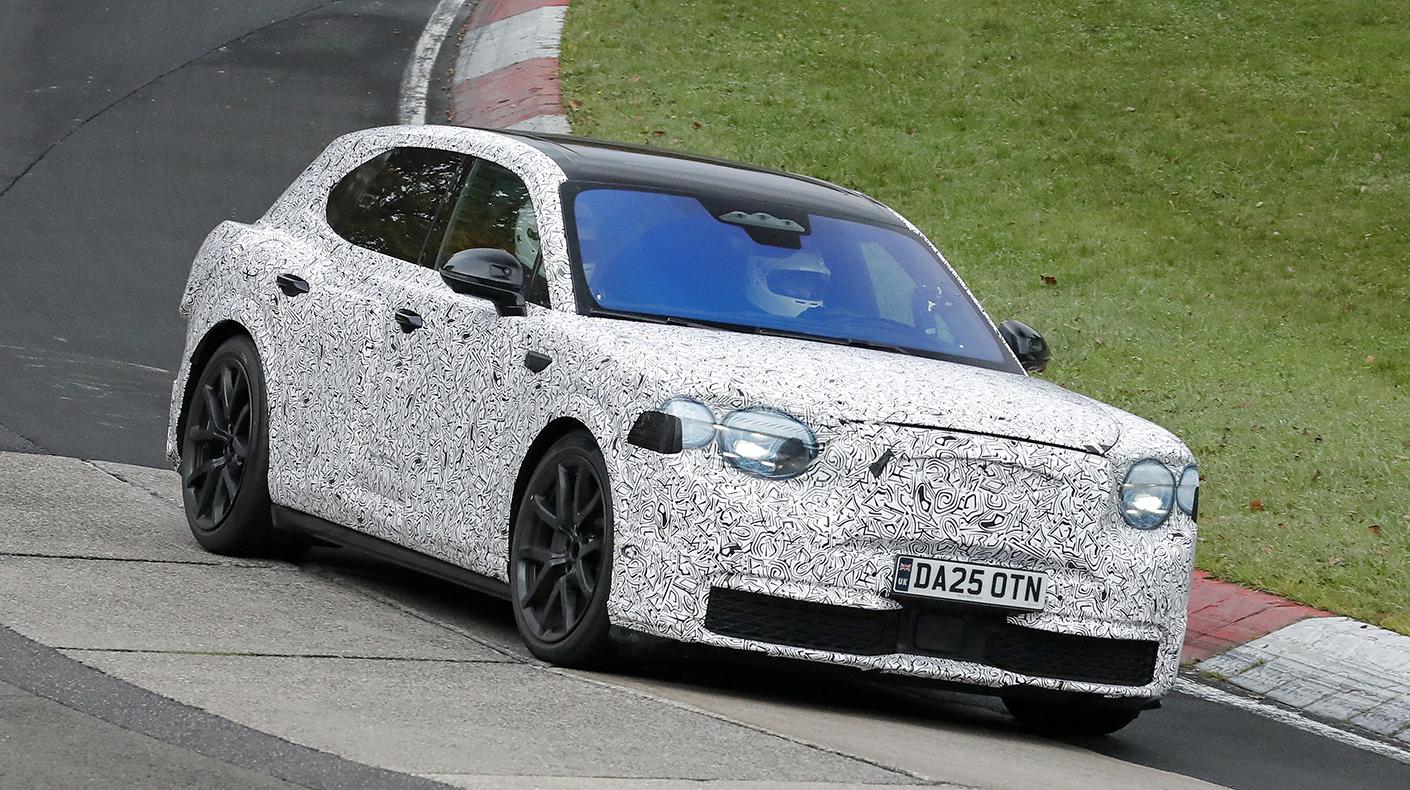By the SEMA D.C. office
The National Highway Traffic Safety Administration (NHTSA) issued a proposed rule to require automatic emergency braking (AEB) and pedestrian AEB systems on new passenger cars and light trucks weighing up to 10,000 lbs. The agency proposes to phase in the rule over three years with an additional year for small-volume manufacturers, final-stage manufacturers, and alterers to comply. SEMA encourages aftermarket businesses to provide feedback on the rulemaking directly to our Government Affairs staff to ensure the association's official comments to NHTSA reflect the breadth of views and feedback from our member companies. Please send your feedback to Eric Snyder at erics@sema.org by Tuesday, August 1. Companies are also encouraged to submit comments to NHTSA on the rulemaking, which must be submitted by August 14.
agency proposes to phase in the rule over three years with an additional year for small-volume manufacturers, final-stage manufacturers, and alterers to comply. SEMA encourages aftermarket businesses to provide feedback on the rulemaking directly to our Government Affairs staff to ensure the association's official comments to NHTSA reflect the breadth of views and feedback from our member companies. Please send your feedback to Eric Snyder at erics@sema.org by Tuesday, August 1. Companies are also encouraged to submit comments to NHTSA on the rulemaking, which must be submitted by August 14.
Below is background information on AEB technology, a section highlighting key components of the proposed rulemaking, and a section that poses key questions for SEMA members to answer regarding the rulemaking.
AEB Rulemaking Overview
The rule would create a Federal Motor Vehicle Safety Standard (FMVSS) that requires AEB and pedestrian AEB systems on all new passenger cars and light trucks weighing up to 10,000 lbs.
The proposed standard includes four requirements for AEB systems for both lead vehicles and pedestrians:
Vehicles would be required to have an AEB system that provides the driver with a forward-collision warning (FCW) at any forward speed greater than 6.2 mph. NHTSA proposes that the FCW be presented via auditory and visual modalities when a collision with a lead vehicle or a pedestrian is imminent. Based on NHTSA's research, this proposal includes auditory and visual warning components specifications. Additional warning modes, such as haptic, would be allowed.
- Vehicles would be required to have an AEB system that applies the brakes automatically at any forward speed greater than 6.2 mph when a collision with a lead vehicle or a pedestrian is imminent. This requirement would ensure that AEB systems operate at all speeds above 6.2 mph, even if these are above the speeds tested by NHTSA, and provide at least some level of AEB system performance in those rear-end crashes. An AEB system active at any speed above 6.2 mph will be able to mitigate collisions at high speeds through, at a minimum, speed reduction.
- When tested according to the proposed standard's test procedures, the AEB system would be required to prevent the vehicle from colliding with the lead vehicle or pedestrian test mannequin. These track test procedures have defined parameters to ensure AEB systems prevent crashes in a controlled testing environment. There are three general test scenarios, each for testing vehicles with a lead vehicle and four for testing vehicles with a pedestrian test mannequin. These test scenarios are designed to ensure that AEB systems perform appropriately in common crash scenarios, including daylight and darkness. The proposed requirements also include two false positive tests (driving over a steel trench plate and driving between two parked vehicles) in which the vehicle would not be permitted to brake in excess of 0.25g in addition to any manual brake application.
- The final proposed requirement is that a vehicle must detect AEB system malfunctions and notify the driver of any malfunction that causes the AEB system not to meet the minimum proposed performance requirements. Malfunctions would include those attributable to sensor obstruction or saturation, such as accumulated snow or debris, dense fog or sunlight glare. The proposal only includes a specification that the notification be visual.
NHTSA's proposed rule would require a vehicle traveling as fast as 62 miles an hour to stop to avoid colliding with a vehicle or pedestrian when manual braking is applied and up to 50 mph when no manual braking is applied during the test. Vehicles would be required to continue to meet these standards after they have been modified.
Testing conditions would include daylight and darkness with both lower beam and upper beam headlamps activated. In the darkness testing condition, NHTSA proposes testing with both lower beam and upper beam headlamps activated. NHTSA believes darkness testing of pedestrian automatic emergency braking (PAEB) is necessary because more than 75% of all pedestrian fatalities occur in conditions other than daylight.
NHTSA does not require the technology to detect and respond to bicycles and motorcycles.
Based on data from the 2019 and 2020 research programs, NHTSA believes that requiring this higher level of system performance is practicable.
NHTSA anticipates the rule to be finalized by the end of 2023. The agency proposes to phase in the rule over three years and would provide an additional year for small-volume manufacturers, final-stage manufacturers, and alters to comply.
- All vehicles would be required to meet requirements associated with lead vehicle AEB and all daylight test requirements for PAEB within three years.
- With respect to darkness testing, lower maximum test speed thresholds would have to be met within three years for some specified test procedures.
- All vehicles would have to meet the minimum performance requirements with higher darkness test speeds four years after the final rule's publication.
- Small-volume manufacturers, final-stage manufacturers, and alterers would be provided an additional year of lead time for all requirements.
If the rule is finalized this year, SEMA members (alters) would be expected to comply by late 2027 or early 2028.
Questions for SEMA Members to Answer Regarding the Proposed Rule
This proposed rule would not permit manual AEB system disablement at any speed above the proposed 6 mph minimum speed threshold above which the AEB system must operate. However, NHTSA anticipates that there are driving situations in which AEB activation may not increase safety and, in some rare cases, may increase risk. The agency is considering generally restricting the automatic deactivation of the AEB system and providing a list of situations in which the vehicle is permitted to automatically deactivate the AEB or otherwise restrict the braking authority granted to the AEB system. Instances where AEB deactivation may be appropriate include:
- When a vehicle is towing a trailer with no independent brakes, or brakes that do not include stability control functions, emergency braking may cause jack-knifing or other dangerous outcomes. A vehicle is lifted above 3.5 inches or 6 inches. A vehicle has larger tires above 37 inches or of those recommended by the OEM; inclement weather or low traction driving scenarios.
NHTSA seeks comments on the appropriate performance requirements if the standard were to permit the installation of a manually operated switch to deactivate AEB system at speeds above 6 mph (similar to what is allowed for electronic stability control (ESC) systems in FMVSS No. 126). Such requirements might include limitations such that the default position of the switch be "AEB ON" with each cycle of the starting system, or the deactivation functionality could be limited to specific speeds.
This proposed rule has no requirements that the vehicle manufacturer provide information to vehicle operators about how the AEB system works. However, NHTSA is considering a requirement that manufacturers provide information describing the conditions under which the AEB system can avoid collisions, warning drivers that the AEB system is an emergency system and not designed for typical braking situations, and specifying the conditions under which the AEB system is not likely to prevent a collision.
- Provide thoughts on why NHTSA should provide consumers with this information.
- Highlight why NHTSA should require OEMs to provide programmability information on AEB and PAEB systems to businesses servicing and modifying vehicles. Provide examples regarding why this is necessary for alterers.
Concerns With NHTSA Test Procedures
In 2020, NHTSA conducted lead vehicle AEB and PAEB performance tests on 11 model-year '19 and '20 vehicles from 10 vehicle manufacturers.
- Only one full-sized truck was included in the testing. Trucks and SUVs make up more than 70% of vehicles sold today. Accordingly, NHTSA must test a comparable percentage of vehicles sold currently.
- Only the smallest vehicle (by weight) in the sample size was able to achieve the proposed AEB and PAEB standards in this NPRM.
Current testing has only done speeds up to 45 mph.
- Only three out of 11 vehicles were able to demonstrate no contact at tests at 45 mph.
- The other eight out of 11 vehicles had an average contact at 23 mph when tested at 45 mph.
- Only one vehicle, the Toyota Corolla LE, avoided contact in all tests and at speeds up to 45mph for 27 out of 27 tests without contact. It is noteworthy that the Corolla was the smallest vehicle that was tested.
NHTSA has tentatively concluded that a no-contact criterion for the performance test requirements is practicable to achieve, consistent with the need for safety, and may be necessary to ensure test repeatability. The no-contact proposed requirement conflicts with the current NCAP, which allows contact 29% of the time and is consistent with European standards.
Background on Automatic Emergency Braking (AEB)
Recognizing its potential to help save lives and reduce injuries, 20 automakers voluntarily agreed in 2016 to install AEB systems on all their light-duty vehicles by September 1, 2022. As part of this voluntary commitment, manufacturers would include both forward-collision warning (FCW) and a crash-imminent braking (CIB) system that would reduce a vehicle's speed in certain rear-end crash-imminent test conditions.
About 95% of all model-year '23 light-duty cars and trucks have such equipment.
The systems use sensors and software to identify dangers and apply brakes if the driver hasn't responded quickly enough or with sufficient braking force.
AEB systems employ sensor technologies and sub-systems that work together to sense when the vehicle is in a crash imminent situation, to automatically apply the vehicle brakes if the driver has not done so, and to apply more braking force to supplement the driver's braking.
Current systems primarily use radar- and camera-based sensors, while emerging systems use lidar and thermal sensors. AEB systems can reduce lead vehicle rear end (lead vehicle AEB) and pedestrian crashes (PAEB).
NHTSA began testing AEB systems as part of the New Car Assessment Program (NCAP) in 2010 and reported on the respective research and progress surrounding the technologies shortly thereafter. NHTSA included FCW systems as a "recommended advanced technology" in NCAP for model-year '11. In November 2015, CIB and dynamic brake support (DBS) technologies were added to the program, with assessments of these technologies to begin in model-year '18.
Under the 2021 Infrastructure Investment and Jobs Act, Congress directed NHTSA to pursue a safety standard for AEB and pedestrian detection. NHTSA's proposed rule would require a vehicle traveling as fast as 62 miles an hour to stop to avoid colliding with a vehicle or pedestrian. Testing conditions would include daylight and darkness with both lower and upper beam headlamps activated.





